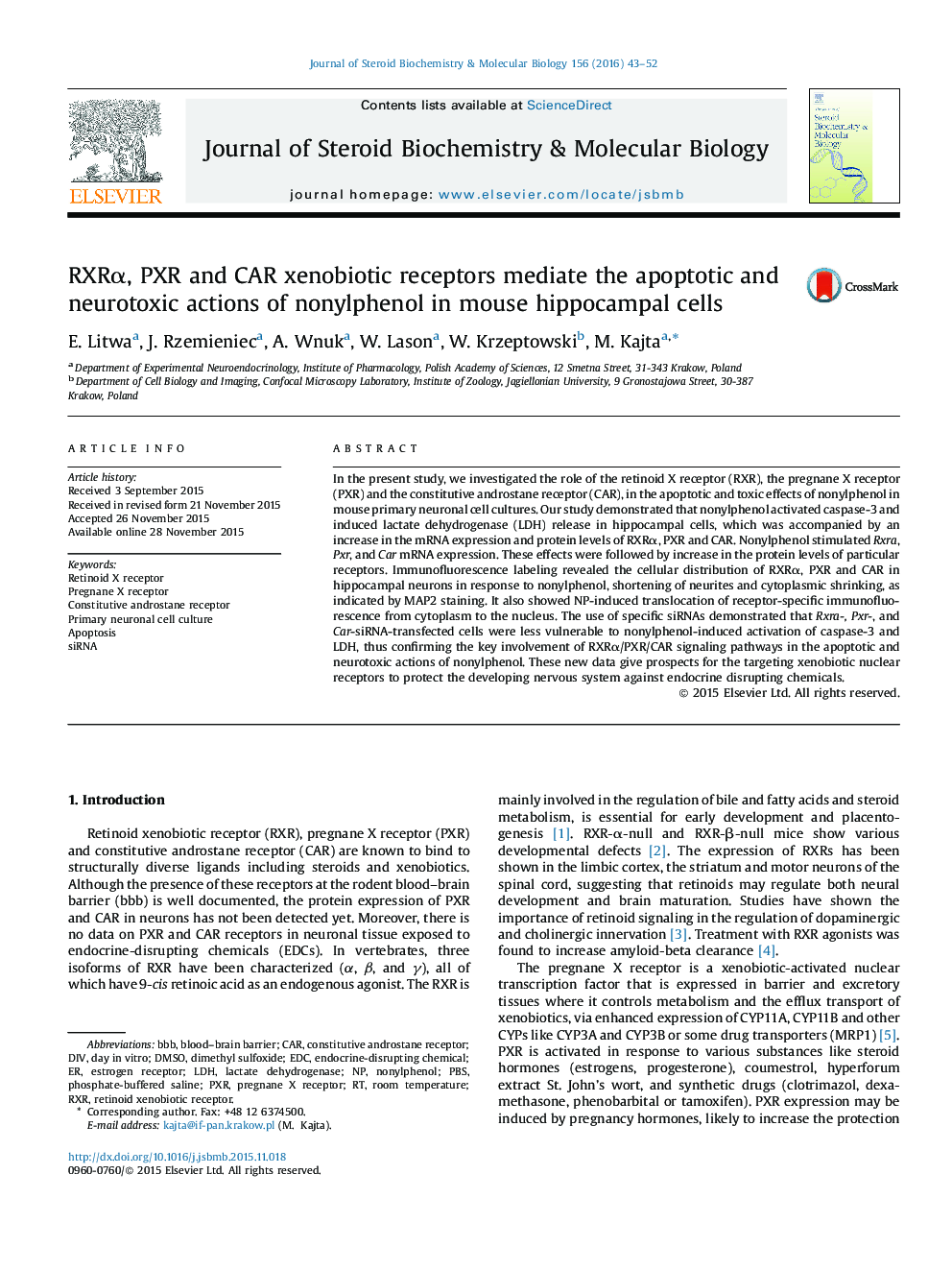| Article ID | Journal | Published Year | Pages | File Type |
|---|---|---|---|---|
| 1991277 | The Journal of Steroid Biochemistry and Molecular Biology | 2016 | 10 Pages |
Abstract
In the present study, we investigated the role of the retinoid X receptor (RXR), the pregnane X receptor (PXR) and the constitutive androstane receptor (CAR), in the apoptotic and toxic effects of nonylphenol in mouse primary neuronal cell cultures. Our study demonstrated that nonylphenol activated caspase-3 and induced lactate dehydrogenase (LDH) release in hippocampal cells, which was accompanied by an increase in the mRNA expression and protein levels of RXRα, PXR and CAR. Nonylphenol stimulated Rxra, Pxr, and Car mRNA expression. These effects were followed by increase in the protein levels of particular receptors. Immunofluorescence labeling revealed the cellular distribution of RXRα, PXR and CAR in hippocampal neurons in response to nonylphenol, shortening of neurites and cytoplasmic shrinking, as indicated by MAP2 staining. It also showed NP-induced translocation of receptor-specific immunofluorescence from cytoplasm to the nucleus. The use of specific siRNAs demonstrated that Rxra-, Pxr-, and Car-siRNA-transfected cells were less vulnerable to nonylphenol-induced activation of caspase-3 and LDH, thus confirming the key involvement of RXRα/PXR/CAR signaling pathways in the apoptotic and neurotoxic actions of nonylphenol. These new data give prospects for the targeting xenobiotic nuclear receptors to protect the developing nervous system against endocrine disrupting chemicals.
Keywords
Related Topics
Life Sciences
Biochemistry, Genetics and Molecular Biology
Biochemistry
Authors
E. Litwa, J. Rzemieniec, A. Wnuk, W. Lason, W. Krzeptowski, M. Kajta,
